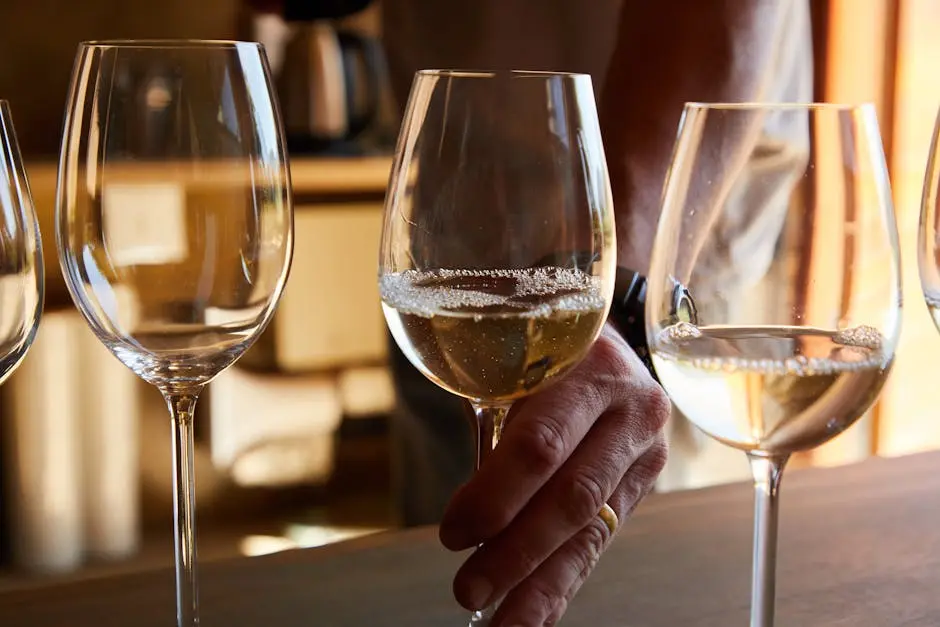Whether you’re a seasoned wine enthusiast or new to the world of wines, a Chardonnay tasting can be a delightful way to explore one of the most popular white wines on the planet. Here’s how you can elevate your tasting experience and gain a deeper appreciation for this beloved wine variety.
Understanding Chardonnay: An Overview
Before diving into the tasting, it’s helpful to understand what makes Chardonnay unique. Known for its versatility, Chardonnay grapes can produce a wide range of flavors, from crisp and fruity to rich and oaky. This delightful grape originates from the Burgundy wine region of France, but it has been embraced by winemakers across the globe, each adding their own distinctive touch. Chardonnay has a unique ability to reflect the terroir where it’s grown, meaning that a Chardonnay from France can taste vastly different from one produced in California or Australia. This adaptability makes it an exciting wine to explore and study, as each bottle can offer something new and unexpected. Understanding these variations can greatly enhance your appreciation of Chardonnay and set the stage for your tasting experience.
A key characteristic of Chardonnay is its ability to take on different flavors based on how it’s aged. Some Chardonnays are aged in oak barrels, which imparts flavors of vanilla and butter, while others are stored in stainless steel tanks, which helps preserve the wine’s natural fruitiness and acidity. This diversity means there’s likely a Chardonnay out there for everyone’s palate, making it one of the most accessible and celebrated varieties in the wine world.
Preparing for the Tasting: Setting the Scene
Creating the right environment is crucial for a successful tasting. The setting you choose should be comfortable, well-lit, and free from strong odors that might interfere with the delicate aromas of the wine. Use proper wine glasses to fully appreciate the nuances of each Chardonnay. It’s best to cleanse your palate before starting, perhaps with a bit of bread or plain water, to ensure that previous flavors don’t linger. Make sure the Chardonnay is served at the optimal temperature, typically between 50 and 60 degrees Fahrenheit, to bring out its best characteristics.
Additionally, having a notebook on hand can be incredibly beneficial for jotting down tasting notes and observations. Not only does this help in remembering your impressions later, but it also aids in developing your palate by allowing you to compare different tastings over time. You might even want to invite a few friends to join you, as sharing the experience can lead to lively discussions and insights that you might not have considered alone.
The Tasting Process: Sip, Swirl, Savor
Mastering the tasting process involves engaging all your senses. Begin by observing the wine’s color and clarity. Is it a pale lemon or a richer gold? These initial observations can provide clues about the wine’s age and the techniques used in its production. Next, gently swirl the wine in your glass to release its aromas. Inhale deeply to capture the complex bouquet – do you detect citrus, stone fruits, or floral notes? The aroma of a Chardonnay is a prelude to the tasting itself.
As you take your first sip, let the wine coat your entire tongue. Pay attention to the balance of flavors: the acidity, the sweetness, and the body of the wine. Notice the finish, too – how long do the flavors linger after you’ve swallowed? A complex, well-made Chardonnay will continue to evolve on your palate, offering new flavors and sensations with each sip. Remember, the goal of tasting is not only to enjoy the wine but also to understand it, so take your time with each glass.
Tasting Notes: What to Expect
Explore the wide variety of flavors and aromas you might encounter in a Chardonnay. From hints of green apple and lemon to the richness of butter and vanilla, each sip can reveal a new layer of complexity. Primary flavors typically include fruits like apple, citrus, and melon, but depending on the winemaking process, you may also detect secondary notes of butter, vanilla, or toast. These come from the malolactic fermentation and oak aging process, respectively, and can add a creamy texture to the wine.
Each geographical region imparts its own unique flavor profile to Chardonnay. For example, a Chardonnay from California might exhibit lush tropical fruit notes and a round, full-bodied texture, while a Burgundian Chardonnay could be more mineral-driven with high acidity and subtle fruitiness. Understanding these distinctions not only enhances your appreciation of the wine but also adds an element of discovery to each tasting.
Pairing Chardonnay: Enhancing the Experience
Pairing your Chardonnay with the right foods can elevate the tasting experience. Whether you’re enjoying a rich, buttery Chardonnay or a crisp, unoaked style, the food you choose to accompany your wine can highlight different aspects of its flavor profile. A classic pairing is Chardonnay with fish or chicken dishes, as the acidity in the wine complements these proteins beautifully. Cream-based sauces and dishes, such as pasta Alfredo or risotto, are also excellent matches, enhancing the creamy texture and buttery notes in oak-aged Chardonnays.
For a more adventurous pairing, consider serving a zesty, citrusy Chardonnay with sushi or dishes featuring fresh herbs, which can draw out the wine’s fruity and floral qualities. On the other hand, a Chardonnay with pronounced minerality might pair perfectly with oysters or a seafood platter, allowing the wine’s flavors to shine against the brininess of the seafood. Experimenting with different pairings is a joyful part of the tasting process and can lead to delightful surprises, enhancing both your meal and the wine itself.
Savor Every Sip
A Chardonnay tasting can be a truly enriching experience, offering you a chance to explore diverse flavors and aromas. By using these tips, you’ll not only enhance your tasting experience but also cultivate a greater appreciation for the nuances of this exquisite wine.



